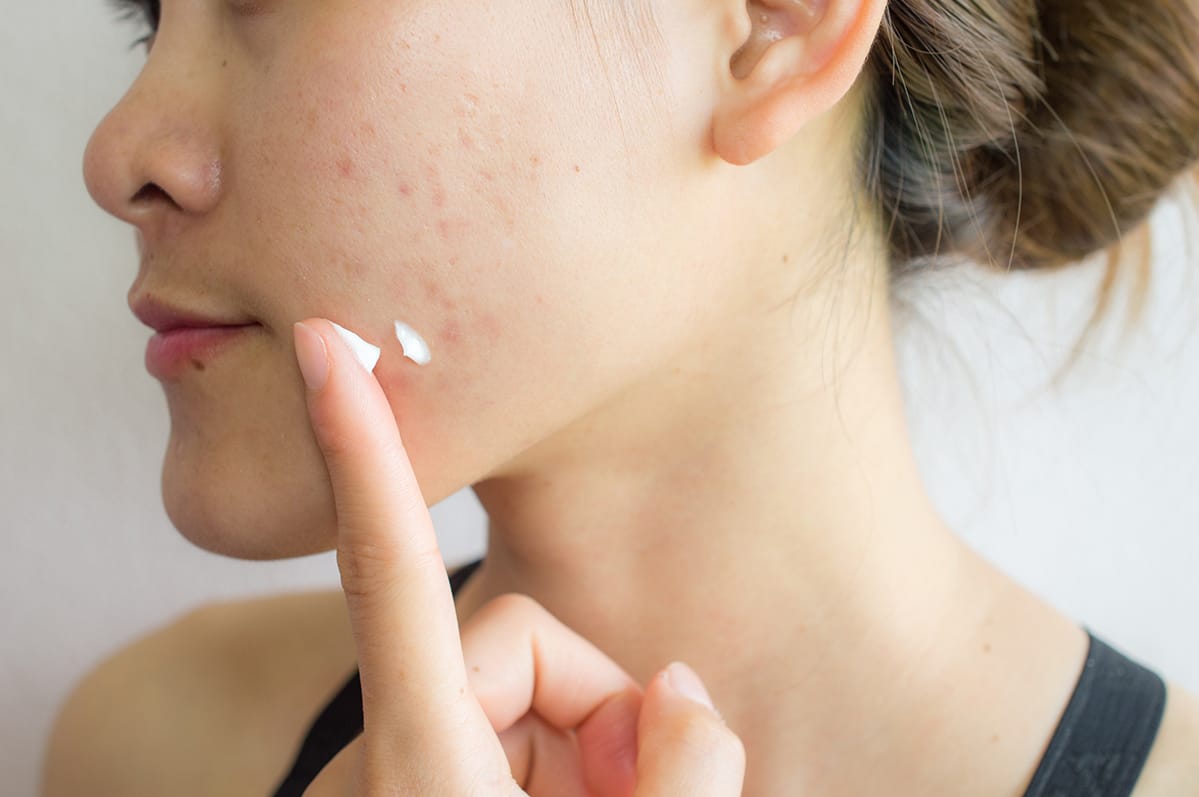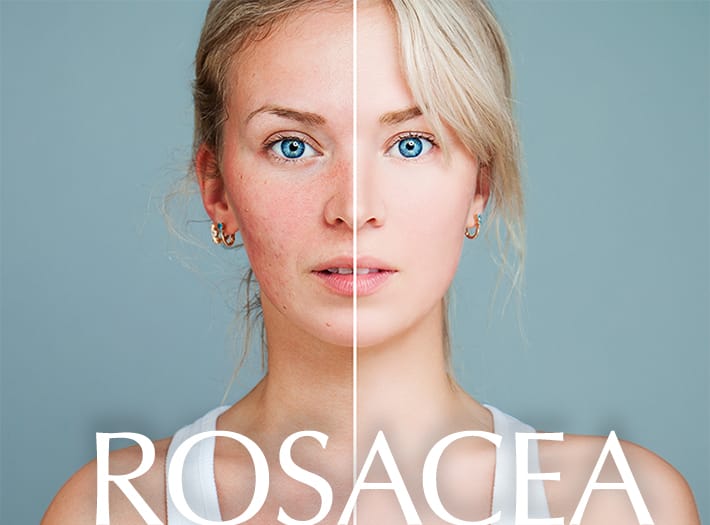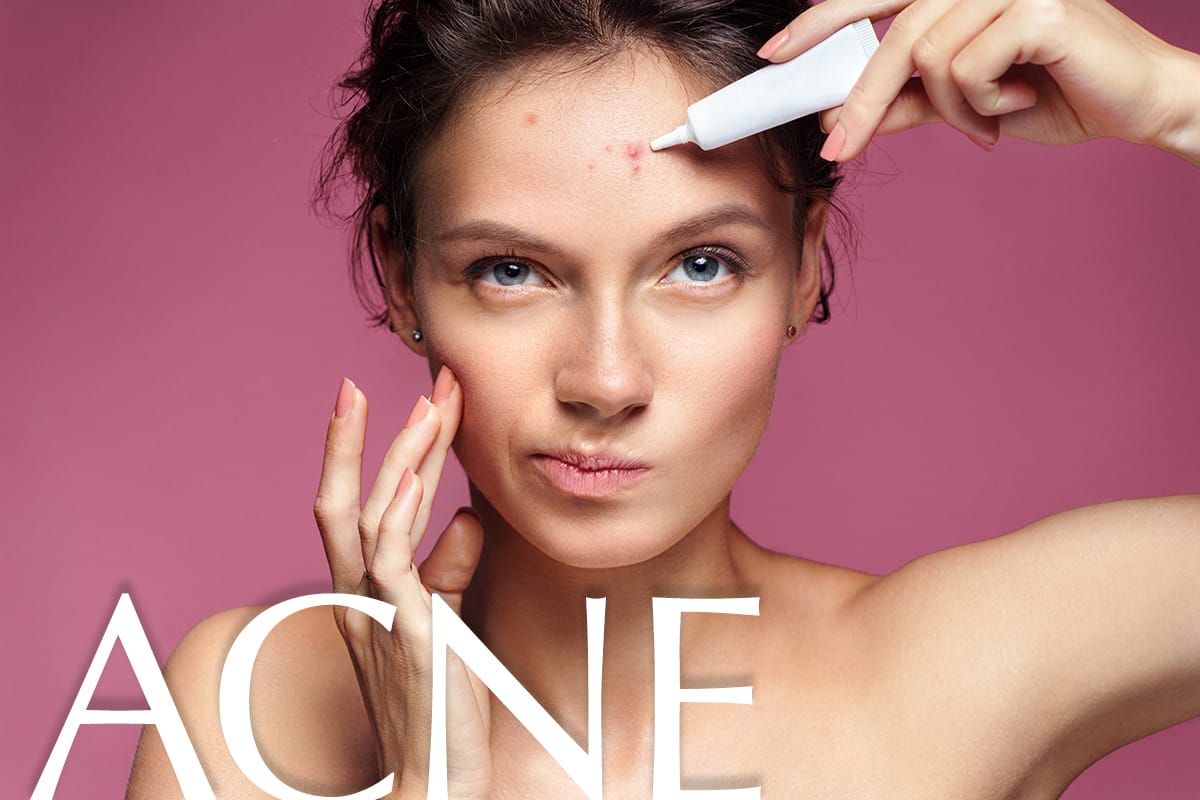Acne

By Jackie Washington, Licensed Esthetician
Acne is a condition of the skin that affects millions of people at any given time. Most often acne is thought of as the rude rebellion of the skin that arises during puberty and one’s teenage years.
While that is true, statistics have shown in recent decades acne is becoming more common in the adult population. In reality, anyone can develop acne at virtually any stage in their life if the conditions are right for a break-out to occur.
The primary causes of acne come down to a combination of factors which can include clogged pores, bacteria, or shifts in hormone activity which in turn drives the last factor, an over production of oil. Fluctuating hormonal activity commonly happens during puberty, pregnancy, menopause and other adult hormonal phases in both men and women.
Here’s a quick biology of acne and how it forms within the skin. We have pores on our skin that secrete oil called sebum, this is our skin’s natural way of moisturizing itself. Normally, the oil follows the hair shaft up to the surface of the skin, sweeping away with it the dead skin cells lining the pore. In the case of acne, the oil gland (pore) gets blocked by sticky skin cells, creating a back-up of oil, trapping bacteria in the process. The conditions are now ideal for a breakout to happen.
Breakouts most commonly affect the face, chest, shoulders and back as these areas have the highest concentrations of sebaceous (oil) glands. Acne can present itself through several types, the most common are:
- Blackheads- This looks like a dark plug where the pore is open at the surface and the debris has oxidized, giving it a dark color and term “blackhead”.
- Whiteheads-This is a closed pore containing a plug and is white at the tip.
- Papules- These are small red bumps that may be tender to the touch, usually grouped in one area giving them a rash-like appearance.
- Pustules- This is an inflamed blocked pore with a white or yellow tip containing pus.
- Nodules and Cysts- These can inflame and grow out of control quickly, are painful and can stay around for weeks at a time.
There are additional factors that can play a role in the development or worsening of acne, the following are some to consider when trying to make sense of an acne breakout.
- Stress/Hormones- Both can trigger an inflammatory response, creating excess oil production. Skin cells can become sticky which encourages clogged pores.
- Genetics- If there’s a family history, chances of developing acne will be greater.
- Friction/Pressure- Frequent contact with cell phones, hats, sports gear, backpacks, touching and/or picking at the face easily transfers bacteria to the skin.
- Cosmetics- Unwashed make-up brushes and older cosmetics can harbor bacteria as well.
- Medications- Some medications such as steroids and birth control can encourage acne production.

Fortunately, there are effective topical products on the market as well as professional treatments that can help clear acne. Some examples of wonderful acne fighting ingredients are salicylic and glycolic acid, benzoyl peroxide, sulfur, retinoids and topical probiotics - some of which come in a wash formulation, others can be found in a leave on cream or gel format. Effective in-office treatments could include facials, chemical peels, LED blue light therapy or other personalized treatment plans, depending on the type and severity of acne.
In many cases, simple changes to daily lifestyle routines can make quite a difference in improving acne. Here are some easy daily adjustments that can be of helpful with reducing and preventing breakouts.
- Washing hair daily will keep bacteria transfer to a minimum
- Washing your body at the end of the shower can prevent hair conditioner from clogging pores
- Changing pillowcases often can keep the day’s bacteria from building up over time
- Cleansing skin after sports activities and other workouts
- Cleaning your cell phone often will reduce bacteria transfer onto your skin
Acne can be frustrating to deal with, having the potential for scarring, and causing stress or anxiety. Through re-approaching your individual situation and making adjustments, most cases of acne can be successfully cleared.
Our top acne fighting picks
Hydropeptide Purifying Cleanser
This impressive multi-tasking cleanser draws out impurities that can lead to breakouts and discourages blemish-causing bacteria without over-drying.
Dermalogica Overnight Clearing Gel
A spot treatment containing salicylic acid that sloughs away dead skin cells. The addition of tea tree oil helps to soothe inflamed skin while you sleep.
Hydropeptide Clarifying Toner Pads
These convenient toner pads fight acne-causing bacteria while brightening discoloration left behind by past breakouts.
PCA BPO 5% Cleanser
This cleanser boasts a 5% concentration of Benzoyl Peroxide, helping clear the most stubborn breakouts.
Skin Authority Beauty Infusions Probiotics
This unique treatment uses probiotic ferments to normalize the skin’s pH balance, reducing inflammation, breakouts, and large pores.
Sources
https://www.mayoclinic.org/diseases-conditions/acne/symptoms-causes/syc-20368047
https://www.aad.org/acne-causes
https://www.acneaction.ca/about-acne/how-does-acne-develop/


